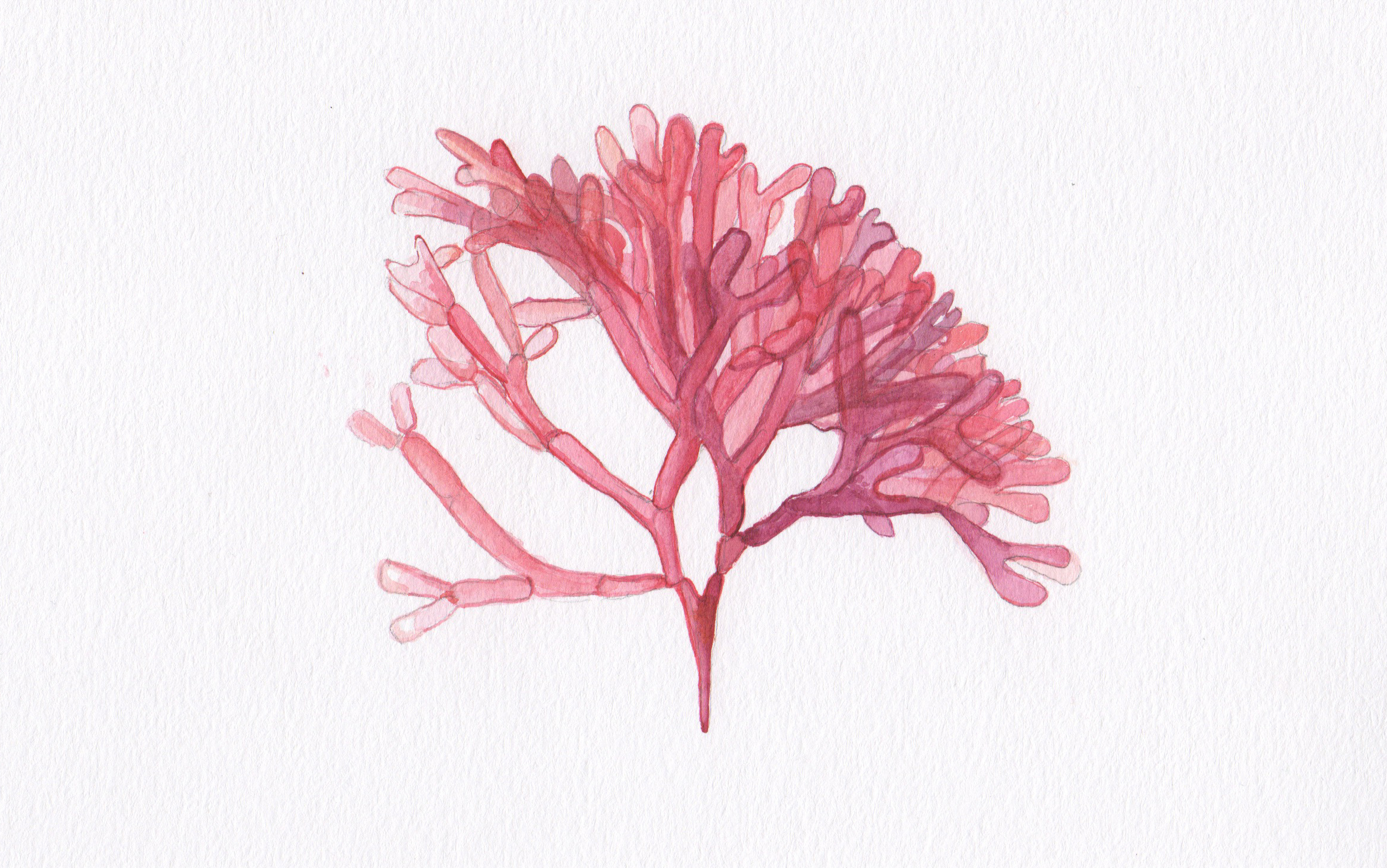Albedo is the fraction of solar energy reflected from the Earth back into space. The word stems from Latin and means whiteness. Ice, with snow on top of it, has a very high albedo.
Red snow describes an area of ice polluted, as it were, with red algae. Red algae is typically a mix of different types of algae – there may be as many as 10,00 species.
Glaciers in Greenland have become darker due to an increase in algae – especially during the summer months when the sun is at its strongest and the water slightly warmer. That is when the algae thrive. To protect themselves from sunlight the algae change colour. They become darker, causing a fall in albedo. The pure whiteness of the snow is therefore decreased. The algae have strong light absorption properties, which means that more sunlight is absorbed and, as a consequence, the surface of the ice gets warmer. This causes rapid surface melting.
Below are three watercolour portraits of red algae by artist Janne Malmros.
Text adapted from When the Ice Turns Black, by polar scientists Sebastian H. Mernild and Jeppe K Malmros, Aktuel Naturvidenskab, 2014
Part of The Learned Pig’s Clean Unclean editorial season, March-May 2015.




